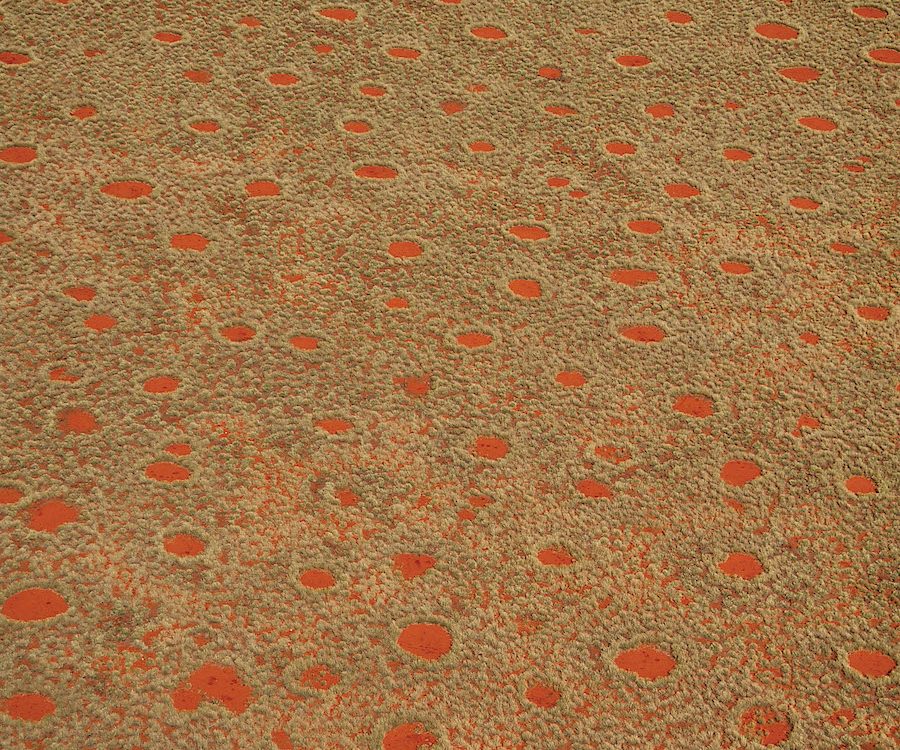Leatherback turtles – Why are they dying on our coastline?
July 13, 2012Marine Protected Area – A unique blend of protected sea and shore
July 13, 2012By Hu Berry
Lichens on the surface of the earth are the same as the proverbial canary in the coal mine. When lichens die something is seriously wrong with the atmosphere. Their ability to absorb all dissolved substances, both desirable and undesirable, makes them ultra-sensitive indicators of polluted air. Growing in subtle profusion, they cover enormous areas of the Namib. Their abundance assures us that, for the present, our desert is relatively free of harmful matter.
Mutualism is a permanent union between two species where the interaction is necessary for the survival and growth of each. It has a meaningful implication – neither can survive without the other. So close is this bond that the marriage is known as a thallus, which is regarded by lichenologists as a single organism. Algae are the one partner, fungi the other in this entrenched relationship.
Algae predominate on top of a thallus, changing sunlight via chlorophyll to manufacture nutrients. Underneath, fungi form the largest part of the thallus. Their function is to provide stable structural support for the fragile alga, reduce dehydration, and absorb minerals for feeding their partner. This enduring pact can shape the landscape and go so far as to disintegrate rocks through persistent biological erosion. No other organism can release minerals trapped in lifeless stone. No other organism can survive in environments that destroy other plants.
Lichens live in the driest desert, in the dankest forest, on top of the highest mountain, and across the polar ice caps. Reindeer ‘moss’, which the antelope (and Laplanders) dig out from under the snow in winter, contain easily digestible, energy-rich sugars. Likewise, half a world away, springbok in the Namib relish the rich resources provided by a desert dish of lichens. In these barren and hostile climates they flourish, preventing wind and water weathering. In some measure they literally extend the lifetime of continents by reducing erosion through their binding of unstable soils.
As pioneer organisms lichens pave the way for other plants to establish themselves. Longevity comes naturally to lichens – they can match and outdo humans with ease. Think in terms of centuries, with one specimen in Lapland claimed by science to be 4 000 years of age, possibly the oldest living organism on Earth. There is even a science known as lichenology, whereby the extremely slow growth of some species is used to measure the age of substrates that cannot be determined otherwise.
More than 18 000 lichen species are known to exist, with more to be discovered. Namibia hosts over 100 different kinds, from Wlotzkasbaken and Welwitschia Plains to Waterberg. Ranging from micro forms measuring two millimetres on rocks to metre-long tassels on trees, lichens present themselves in three distinctive growth forms. Crustose or crust-like growth is firmly attached to the substrate; foliose or leaf-like shapes are flattened and prostrate; fruticose assumes a shrubby or hair-like appearance. Yet another form appears on the naked surface of the desert – vagrant or wandering lichens have no secure abode but wander with the wind, often accumulating in shallow depressions and resembling dry seaweed. Theirs is the ultimate freedom of the Namib.
Air pollution has not yet permeated our desert, but all-wheel-drive vehicles and quad-bikes have. The screeching tyres of a quad-bike obliterate one hectare of lichen surface for every 32 kilometres it travels and a four-wheel-drive vehicle annihilates the same area of lichens every 10 kilometres. To totally destroy a lichen bed, drive across it once, as is unfortunately done by ignorant or careless thrill seekers, and you will demolish its fragile form for a hundred or more years. Testimony to this frightening fact lies in the form of century-old wagon tracks traversing the Namib, where lichens have yet to recover. Show kindness to lichens and leave them alone. If you wish – it will please you and no doubt the lichen also – sprinkle a little water on them on a dry, dusty desert day to bring out the colours – mostly grey, green, brown, blue, ochre, orange, yellow and black – and render their brittle surface soft to the touch.
Reverence for these ancient forms of life come in the words of an American naturalist, Joseph Krutch, who wrote in the classic Geography of Hope – to have known the desert 40 years ago:
A lichen is an admirable organism.
It is the first colonizer of bare rock,
And can live where nothing else can.
It has, if I may be so impudent as to put it this way,
my great respect.
Mars seems a trifle less bleak
When I think that lichens may grow there.
The thought of a dead universe is harder to bear
than the thought of one in which green scales expand
and grow a little before they die.
This article appeared in the 2009/10 edition of Conservation and the Environment in Namibia.
Hu Berry was a scientist, conservationist and specialist tour guide. He was one of Venture Publications' most valued authors. Sadly he passed away in July 2011. To read more about him click here.


